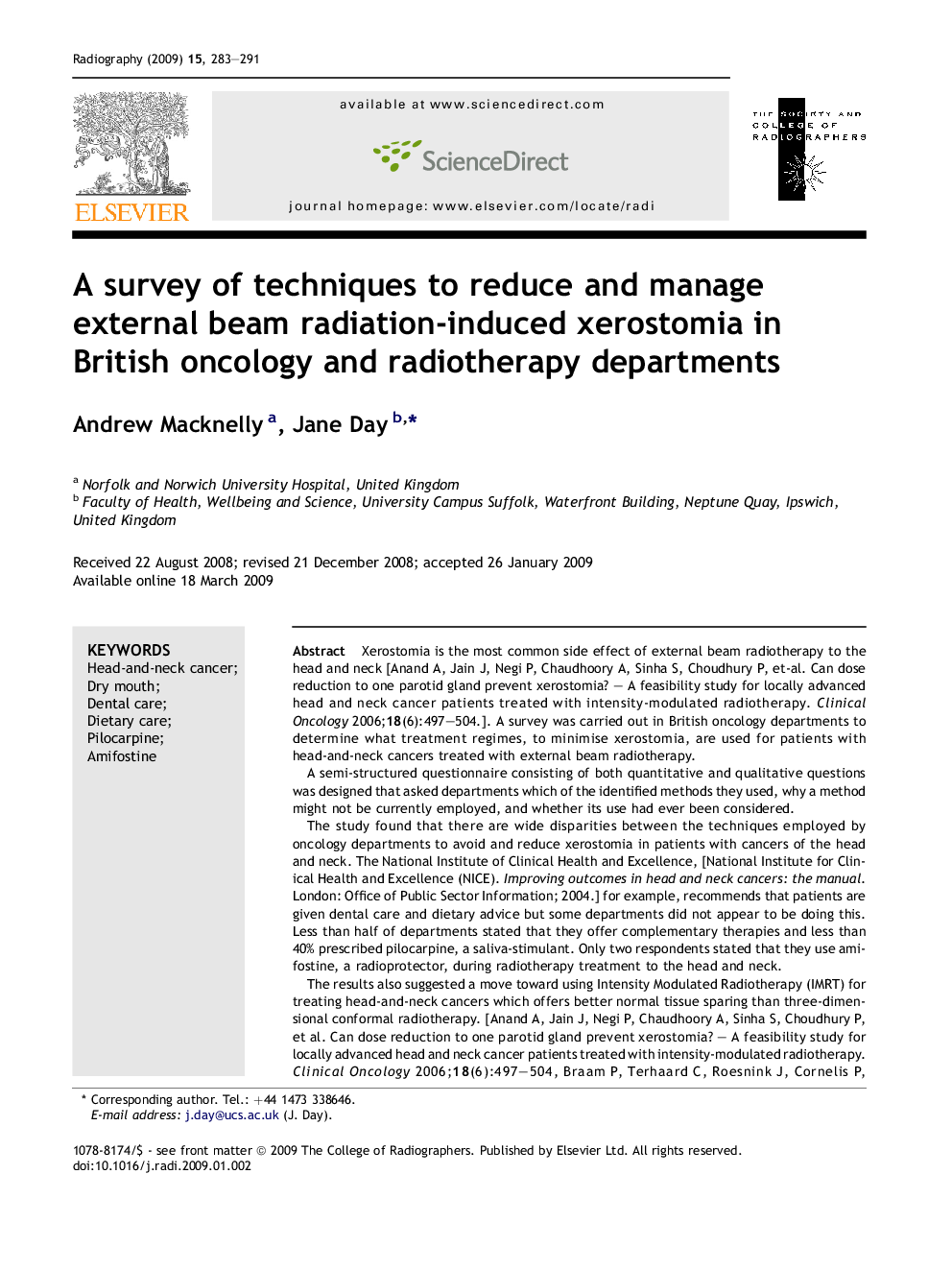| کد مقاله | کد نشریه | سال انتشار | مقاله انگلیسی | نسخه تمام متن |
|---|---|---|---|---|
| 2737478 | 1148065 | 2009 | 9 صفحه PDF | دانلود رایگان |

Xerostomia is the most common side effect of external beam radiotherapy to the head and neck [Anand A, Jain J, Negi P, Chaudhoory A, Sinha S, Choudhury P, et-al. Can dose reduction to one parotid gland prevent xerostomia? – A feasibility study for locally advanced head and neck cancer patients treated with intensity-modulated radiotherapy. Clinical Oncology 2006;18(6):497–504.]. A survey was carried out in British oncology departments to determine what treatment regimes, to minimise xerostomia, are used for patients with head-and-neck cancers treated with external beam radiotherapy.A semi-structured questionnaire consisting of both quantitative and qualitative questions was designed that asked departments which of the identified methods they used, why a method might not be currently employed, and whether its use had ever been considered.The study found that there are wide disparities between the techniques employed by oncology departments to avoid and reduce xerostomia in patients with cancers of the head and neck. The National Institute of Clinical Health and Excellence, [National Institute for Clinical Health and Excellence (NICE). Improving outcomes in head and neck cancers: the manual. London: Office of Public Sector Information; 2004.] for example, recommends that patients are given dental care and dietary advice but some departments did not appear to be doing this. Less than half of departments stated that they offer complementary therapies and less than 40% prescribed pilocarpine, a saliva-stimulant. Only two respondents stated that they use amifostine, a radioprotector, during radiotherapy treatment to the head and neck.The results also suggested a move toward using Intensity Modulated Radiotherapy (IMRT) for treating head-and-neck cancers which offers better normal tissue sparing than three-dimensional conformal radiotherapy. [Anand A, Jain J, Negi P, Chaudhoory A, Sinha S, Choudhury P, et al. Can dose reduction to one parotid gland prevent xerostomia? – A feasibility study for locally advanced head and neck cancer patients treated with intensity-modulated radiotherapy. Clinical Oncology 2006;18(6):497–504, Braam P, Terhaard C, Roesnink J, Cornelis P, Raaijmakers C. Intensity-modulated radiotherapy significantly reduces xerostomia compared with conventional radiotherapy. International Journal of Radiation Oncology, Biology and Physics 2006, Wendt TG, Abbasi-Senger N, Salz H, Pinquart I, Koscelny S, Przetak S, et al. 3D-conformal-intensity modulated radiotherapy with compensators for head and neck cancer: clinical results of normal tissue sparing. Radiation Oncology 2006;1:18. Available from: http://www.ro-journal.com/content/1/1/18 [accessed on 21.11.06].]. This, in turn, offers increased normal tissue sparing than conventional radiotherapy [Ng M, Porceddu S, Milner A, Corry J, Hornby C, Hope G, et al. Parotid-sparing radiotherapy: does it really reduce xerostomia? Clinical Oncology 2005;17(8):610–7.]. The survey indicated that all three techniques, however, are still in use in oncology and radiotherapy departments, and several departments stated that financial considerations were hindering their move toward providing IMRT.
Journal: Radiography - Volume 15, Issue 4, November 2009, Pages 283–291